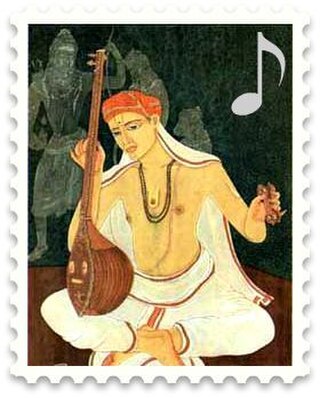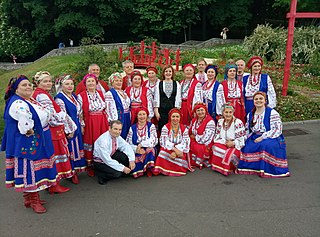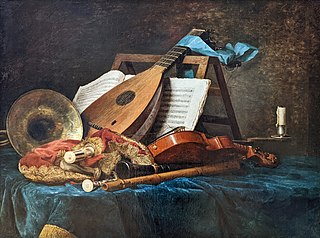 | ||||||
| Music of India | ||||||
| Genres | ||||||
|---|---|---|---|---|---|---|
Traditional
Modern | ||||||
| Media and performance | ||||||
| ||||||
| Nationalistic and patriotic songs | ||||||
| ||||||
| Regional music | ||||||
| ||||||
The music of Himachal Pradesh includes many kinds of folk songs from the area, many of which are sung without accompaniment.
 | ||||||
| Music of India | ||||||
| Genres | ||||||
|---|---|---|---|---|---|---|
Traditional
Modern | ||||||
| Media and performance | ||||||
| ||||||
| Nationalistic and patriotic songs | ||||||
| ||||||
| Regional music | ||||||
| ||||||
The music of Himachal Pradesh includes many kinds of folk songs from the area, many of which are sung without accompaniment.
| External videos | |
|---|---|
Jhoori is a type of song that celebrates extramarital romance.The word means lover . It is popular in Shimla, Solan and Sirmaur, and is accompanied by a female dance called jhoomar.
Laman songs from Kullu Valley are another type of love song.
Saṃskāra songs are sung at festivals and celebrations by women of Himachal Pradesh. These songs are based on ragas, which are compositions of Indian classical music, as are the martial jhanjhotis .
Ainchaliyan are religious songs, sung at the bride's house after a wedding and by women at the home of an unmarried girl.
In Chamba-Pangi, wandering musicians play a khanjari (tambourine) and perform, also using string puppets.
Himachal Pradesh folk music features a wide variety of drums, including dammama , damanght , gajju , doru , dhaunsa , nagara , dholku , nagarth , tamaka , dafale , dhol , dolki and hudak . Non-drum percussion instruments include the ghanta and ghariyal (gongs), chimta (tongs), manjira and jhanjh (cymbals), ghungru (bells), thali (platter) and kokatha murchang .

There are also wind instruments like algoja/algoza (twin flutes), peepni , shehnai (oboe), bishudi (flute), karnal (straight brass trumpet) and ranasingha (curved brass trumpet).
String instruments include gramyang , riwana (a small fretless lute), sarangi (bowed lute), jumang , ruman, ektara and kindari davatra .
Mohit Chauhan's 'morni', Karnail Rana's various folk songs, Dheeraj's love songs and Thakur Das Rathi's 'Naatis' has given great contribution to the music of Himachal Pradesh. New initiatives like Mountain Music Project and Laman are giving Himachali folk a contemporary sound.
| | This section is empty. You can help by adding to it. (May 2021) |

A musical ensemble, also known as a music group or musical group, is a group of people who perform instrumental and/or vocal music, with the ensemble typically known by a distinct name. Some music ensembles consist solely of instrumentalists, such as the jazz quartet or the orchestra. Other music ensembles consist solely of singers, such as choirs and doo-wop groups. In both popular music and classical music, there are ensembles in which both instrumentalists and singers perform, such as the rock band or the Baroque chamber group for basso continuo and one or more singers. In classical music, trios or quartets either blend the sounds of musical instrument families or group instruments from the same instrument family, such as string ensembles or wind ensembles. Some ensembles blend the sounds of a variety of instrument families, such as the orchestra, which uses a string section, brass instruments, woodwinds, and percussion instruments, or the concert band, which uses brass, woodwinds, and percussion.
Music of Serbia represents the musical heritage of Serbia, both historical and modern. It has a variety of traditional music styles, which are part of the wider Balkan musical tradition, with its own distinctive sound and characteristics.

The music of Myanmar shares many similarities with other musical styles in the region. Traditional music is melodic, having its own unique form of harmony, often composed with a 4
4 (na-yi-se), a 2
4 (wa-let-se) or a 8
16 time signature. In Burmese, music segments are combined into patterns, and then into verses, making it a multi-level hierarchical system. Various levels are manipulated to create a song. Harmony in Mahagita is known as twe-lone, which is similar to a chord in western music. For example, C is combined with F or G.

Chad is an ethnically diverse Central African country. Each of its regions has its own unique varieties of music and dance. The Fulani people, for example, use single-reeded flutes, while the ancient griot tradition uses five-string kinde and various kinds of horns, and the Tibesti region uses lutes and fiddles. Musical ensembles playing horns and trumpets such as the long royal trumpets known as "waza" or "kakaki" are used in coronations and other upper-class ceremonies throughout both Chad and Sudan.
Various kinds of Arab music are popular in Libya such as Andalusi music, locally known as Ma'luf, Chabi and Arab classical music.

Music of Jammu and Kashmir reflects a rich musical heritage and cultural legacy of the Indian-administered union territory of Jammu and Kashmir. Two different regions of Jammu and Kashmir consists the Jammu region and Kashmir Valley. Music of Kashmir Valley has influences of Central Asian music while music from Jammu region is similar to that of other regions of North India.
Berber music refers to the musical traditions of the Berbers, a diverse grouping of distinct ethnic groups indigenous to North Africa who predate the arrival of Arabs in the Arab migration to the Maghreb. Their main connections are identified by their usage of the mostly mutually unintelligible Berber languages. Berber music varies widely across North Africa. It is stylistically diverse, with songs being predominantly African rhythms and a stock of oral literature.

The folk music of Uttarakhand refers to the traditional and contemporary songs of Kumaon and Garhwal regions in the foothills of Himalayas. This music has it's root in nature and the hilly terrain of the region.
The musical traditions of Central Asia mirror the immense diversity found in the cultures and populations residing in the region. Principal instrument types are two- or three-stringed lutes, the necks either fretted or fretless; fiddles made of horsehair; flutes, mostly sige at both ends and either end-blown or side-blown; and jew harps, mostly metal. Percussion instruments include frame drums, tambourines, and kettledrums. Instrumental polyphony is achieved primarily by lutes and fiddles.

Badakhshan is a region of Tajikistan and Afghanistan with a unique musical heritage, especially that of the remote Pamiri Ismailis. Badakhshan's unique folk scene is said to be characteristed by the use of many chromatized tones in a narrow melodic range, and the use of a characteristic minor-like scale.

In many parts of sub-Saharan Africa, the use of music is not limited to entertainment: it serves a purpose to the local community and helps in the conduct of daily routines. Traditional African music supplies appropriate music and dance for work and for religious ceremonies of birth, naming, rites of passage, marriage and funerals. The beats and sounds of the drum are used in communication as well as in cultural expression.
The kutiyapi, or kudyapi, is a Philippine two-stringed, fretted boat-lute. It is four to six feet long with nine frets made of hardened beeswax. The instrument is carved out of solid soft wood such as that from the jackfruit tree.

The music of the ancient Mayan courts is described throughout native and Spanish 16th-century texts and is depicted in the art of the Classic Period. The Maya played instruments such as trumpets, flutes, whistles, and drums, and used music to accompany funerals, celebrations, and other rituals. Although no written music has survived, archaeologists have excavated musical instruments and painted and carved depictions of the ancient Maya that show how music was a complex element of societal and religious structure. Most of the music itself disappeared after the dissolution of the Maya courts following the Spanish Conquest. Some Mayan music has prevailed, however, and has been fused with Spanish influences.

The Santal people love music and dance. Like other Indian people groups, their culture has been influenced by mainstream Indian culture and by Western culture, but traditional music and dance still remain. Santal music differs from Hindustani classical music in significant ways. Onkar Prasad has done the most recent work on the music of the Santal but others preceded his work, notably W. G. Archer who collected and analyzed hundreds of Santal songs in the mid-twentieth century. The Santal traditionally accompany many of their dances with two drums: the Tamak' and the Tumdak'. The flute was considered the most important Santal traditional instrument and still evokes feelings of nostalgia for many Santal.

Ukrainian folk music includes a number of varieties of traditional, folkloric, folk-inspired popular music, and folk-inspired European classical music traditions.

Knowledge of the biblical period is mostly from literary references in the Bible and post-biblical sources. Religion and music historian Herbert Lockyer, Jr. writes that "music, both vocal and instrumental, was well cultivated among the Hebrews, the New Testament Christians, and the Christian church through the centuries." He adds that "a look at the Old Testament reveals how God's ancient people were devoted to the study and practice of music, which holds a unique place in the historical and prophetic books, as well as the Psalter."

A musical instrument is a device created or adapted to make musical sounds. In principle, any object that produces sound can be considered a musical instrument—it is through purpose that the object becomes a musical instrument. A person who plays a musical instrument is known as an instrumentalist. The history of musical instruments dates to the beginnings of human culture. Early musical instruments may have been used for rituals, such as a horn to signal success on the hunt, or a drum in a religious ceremony. Cultures eventually developed composition and performance of melodies for entertainment. Musical instruments evolved in step with changing applications and technologies.

Azerbaijani folk music combines the distinct cultural values of all civilisations that have lived in Azerbaijan and Iranian Azerbaijan region.

Music technology is the study or the use of any device, mechanism, machine or tool by a musician or composer to make or perform music; to compose, notate, playback or record songs or pieces; or to analyze or edit music.

Mechanical music technology is the use of any device, mechanism, machine or tool by a musician or composer to make or perform music; to compose, notate, play back or record songs or pieces; or to analyze or edit music. The earliest known applications of technology to music was prehistoric peoples' use of a tool to hand-drill holes in bones to make simple flutes. Ancient Egyptians developed stringed instruments, such as harps, lyres and lutes, which required making thin strings and some type of peg system for adjusting the pitch of the strings. Ancient Egyptians also used wind instruments such as double clarinets and percussion instruments such as cymbals. In Ancient Greece, instruments included the double-reed aulos and the lyre. Numerous instruments are referred to in the Bible, including the horn, pipe, lyre, harp, and bagpipe. During Biblical times, the cornet, flute, horn, organ, pipe, and trumpet were also used. During the Middle Ages, hand-written music notation was developed to write down the notes of religious Plainchant melodies; this notation enabled the Catholic church to disseminate the same chant melodies across its entire empire.